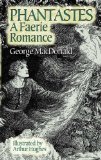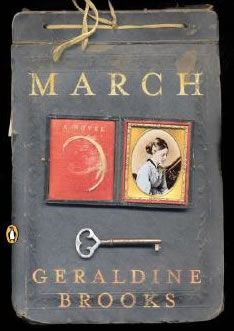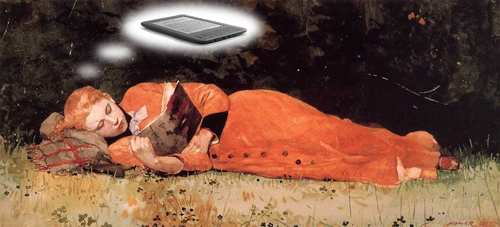Phantastes
 This is the book that C.S. Lewis read one day on a train and felt his imagination had been “baptized.” I read it back when I was in college and it didn’t capture me. But recently, after reading more of George MacDonald’s books and being intrigued, I decided to try again.
This is the book that C.S. Lewis read one day on a train and felt his imagination had been “baptized.” I read it back when I was in college and it didn’t capture me. But recently, after reading more of George MacDonald’s books and being intrigued, I decided to try again.
I thought I didn’t remember it, and it’s partly true; it was mixed up in my memory with Lilith, another of MacDonald’s tales I read around the same time. But I was surprised to stumble across not episodes, but sentences that I remembered exactly from my previous reading of this book.
This time, it captured me. I still wouldn’t say I can “explain” it (which is part of the reason I like it), but I felt I grasped more than I did before. I’m sure certain scenes will stay with me, waiting to be explained by experiences I’ve yet to have.
What it is: “A Faerie Romance,” its title proclaims. It concerns the journey of a young man named Anodos (Greek for “the path up” or “the march up”) through Fairy Land. His journey begins on his 21st birthday, when he inherits the key to an antique desk of his father’s, and discovers a secret compartment at its very heart out of which pops a fairy maiden claiming to be (maybe) his ancestor, and suggesting that some surprises are in store. The next morning his room is transformed, and his journey begins.
I remember studying a novel written about a hundred years before Phantastes — Wieland by Charles Brockden Brown — in which enclosures functioned as mind symbols. So that’s what I thought of when Anodos unlocked the desk. Judging from the nature of the adventures that follow, I think MacDonald may have been using the same symbolism. Fairy Land has a labyrinthian quality, full of mysterious and complex palaces, tales within tales, door that open into different worlds, and encounters and re-encounters with various characters. He meets his shadow there. He considers questions of love and death there. And ultimately he’s tested and learns true humility there. I read one review that said Anodos gives up his ideals at the end, but I disagree. His ideals are tempered, but surely he doesn’t give them up.
That’s a paltry summary. There’s really no way I can summarize this tale. It has a dreamlike quality. But as I said, some of its episodes will stay with me. For instance, there’s one tale Anodos reads during his stay at a mysterious castle in fairyland about a young man with a magic mirror. Every night a woman appears in his apartment, but he can only see her in the mirror. It’s an absorbing story that, like many episodes, explores the nature of love and passion. Will he rise to the occasion and set her free? In the episode that’s perhaps most decisive for Anodos, he witnesses a religious ceremony in which white-robed youths are presented to a majestic figure on a throne — who turns out to be made of wood, and the chamber behind his chair contains a raging wolf that must be killed. What does the wolf stand for? Another decisive plotline has to do with a marble lady Anodos calls to life. She represents his ideal of beauty, but will she return his love — if indeed it’s love that he feels?
These are the kinds of questions the story raises — and many more, both metaphysical and practical. Now that I’ve read more MacDonald, I can recognize some characteristic features, and I enjoyed being able to fit this tale into my mind’s slowly growing network of books by this author: The Princess and the Goblin, The Princess and Curdie, The Golden Key, The Light Princess, At the Back of the North Wind, and Lilith. I also enjoyed the illustrations by Arthur Hughes, praised in the preface by MacDonald’s son Greville as part of the reason he supported this re-issue of the book in 1905. I recommend it for fans of MacDonald, and for fans of fairy tales in general.


